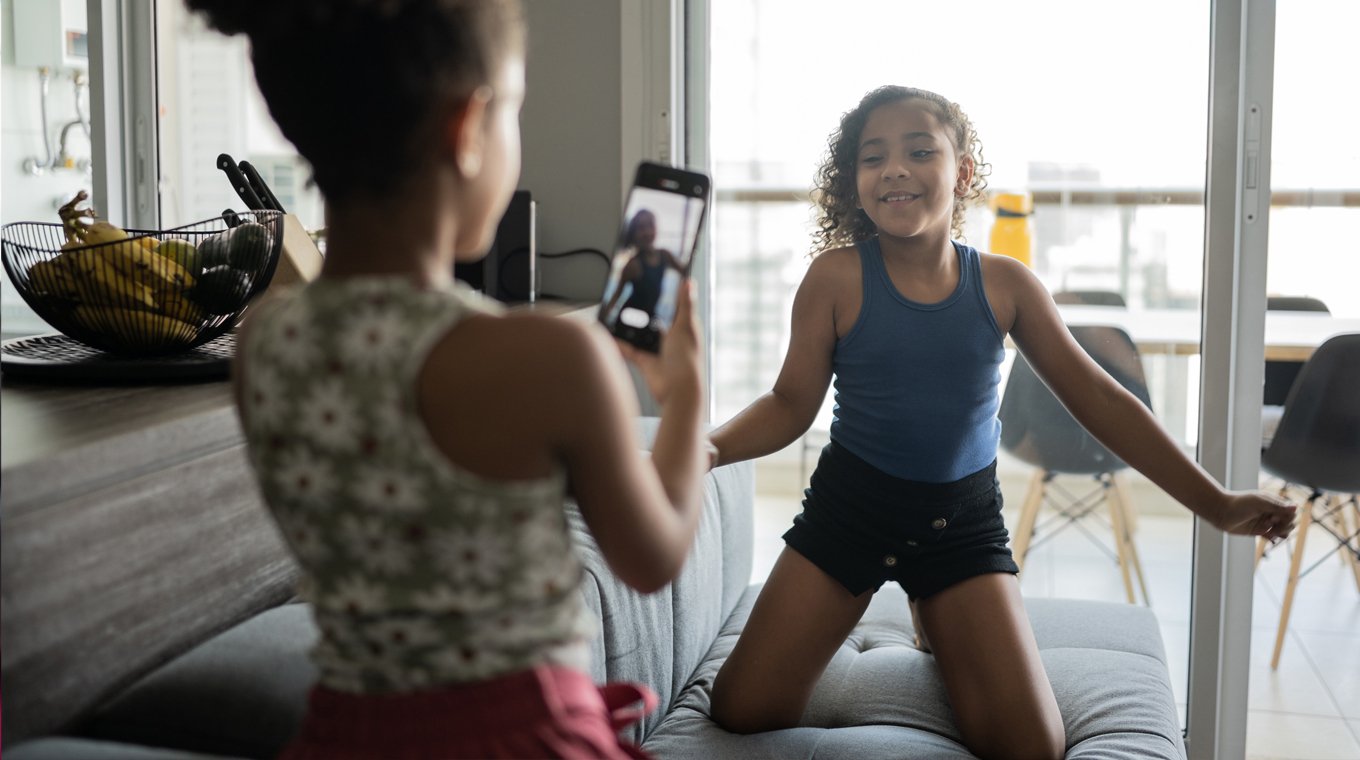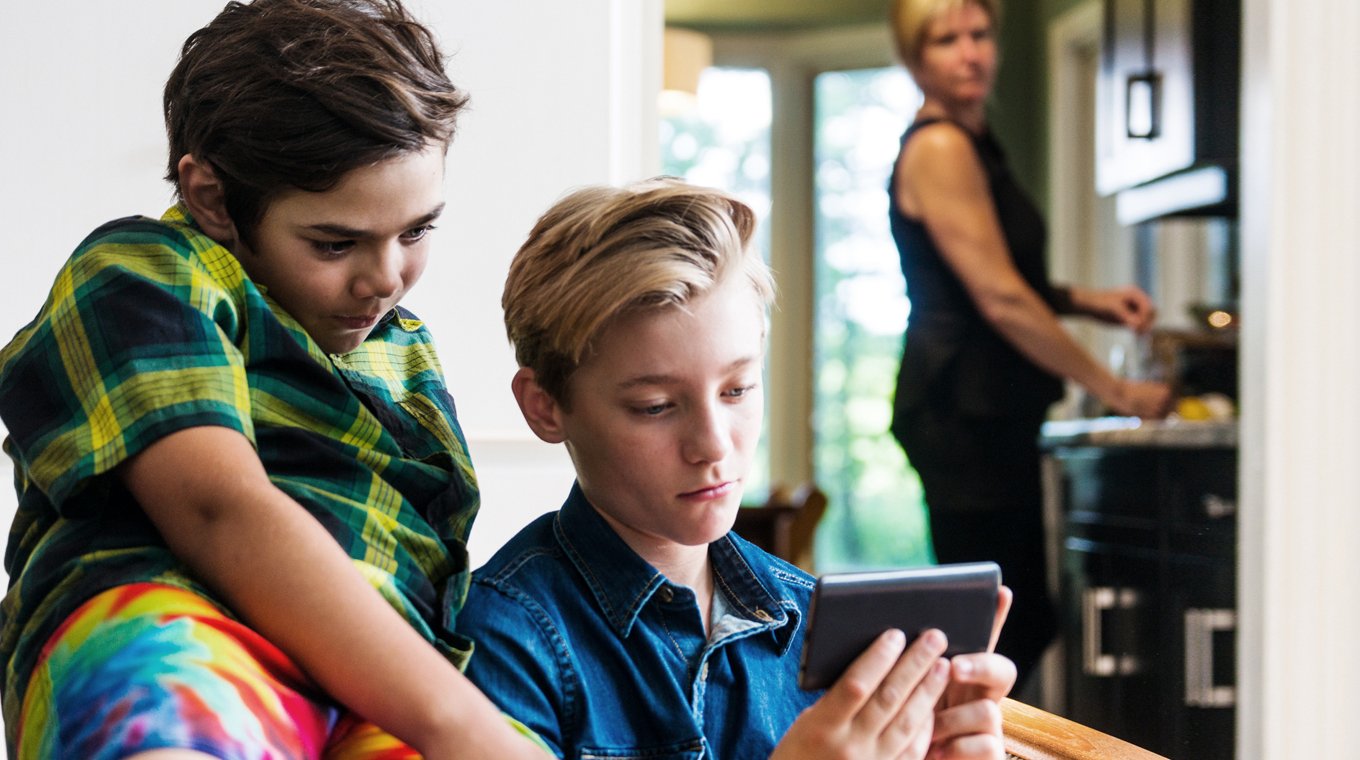

In this article
As a parent, the internet can be a pretty scary place — especially when we think about the safety of social media (or lack thereof). Anyone with teens or tweens, and sometimes kids even younger, knows that it can be difficult to stop that social media train once it’s already rolling, and if their friends are already using popular apps like Instagram and TikTok? Forget it. The begging to create their own accounts can simply be relentless — and some kids are even willing to do so without our permission (and break the age guidelines of the sites in question in the process).
Fortunately, there are ways to keep your kids safe online without having to say no to all of their internet requests. As long as you have a clear understanding of what the sites they’re using are all about and can set boundaries right away that you and your child agree on, internet safety is easier than it looks.
Wondering about social media safety for kids? Read on for what you need to know about all of the major social media apps and sites, and how to keep your kids safe while using them.
How do kids use social media? Here are the most popular platforms

There are dozens of different social media sites out there, all of varying popularity. And while all of them have their own terms and conditions that users agree to when they sign up for the platforms, they are all beholden to the Children’s Online Privacy Protection Act, which dictates a minimum age of 13 to use any social media site.
Of course, children have been known to circumvent these rules, but if you find out that your child has done this, you can report your child’s account and it will likely be removed.
Instagram
By far, one of the most popular platforms out there is Instagram, and users must be at least 13 to sign up. Though it’s mostly all about sharing photos, it also has the capability to share private messages, including messages and photos that disappear within a certain amount of time. While Instagram does not give parents access to their child’s account, they do supply A Parent’s Guide to Instagram to help them understand the app.
Parents should be aware that many kids have something called a Finstagram, or Finsta, a fake Instagram account they set up to — you guessed it — hide posts from their parents.
TikTok
Kids and adults alike are loving this video-based app, which also has a private messaging function. However, TikTok has a special version for younger users, which allows children under the age of 13 to use the app without being able to send or receive private messages, and they are able to view and create videos without sharing them to TikTok. Instead, the videos save to their device.
Facebook
Facebook is one of the oldest, most popular social networking sites out there (and falling out of favor with most young people, if you ask your kids). They also supply safety resources for parents on the site. Location sharing is turned off by default on a minor’s account, though they are able to turn it back on, and parents are able to request data from their child’s account with a notarized statement proving parental rights.
Other social media sites your kids may be using

There are a couple of other social media apps to be aware of that your kids might just be obsessed with:
Snapchat
Once the popular kid among the young social media set, Snapchat’s glow has been somewhat dimmed by TikTok. But while it’s still popular because it allows users to share photos that disappear within 24 hours — it makes it obviously dangerous for minors who may receive or send messages or photos that are inappropriate without a trace. The app also offers A Parent’s Guide to Snapchat.
Twitter
Twitter is all about sharing short messages both publicly and privately, though some parents may want to make sure that their children’s accounts are set to private and that they exhaust the full scope of their available privacy settings. In Twitter’s privacy policy, the app makes it clear that “our services are not directed to children.”
How to stay safe on social media

If you’ve decided to give your child the OK to use social media, it’s important to keep an eye out for red flags. If you notice that they’re being particularly secretive when they’re using their phones or computers or refuse to show you what they’re doing or tell you who they’re talking to, that might mean something is up.
It’s also important to employ all of the privacy options offered by each social media site, and to let your child know up front what the rules are surrounding their use of these apps.
“Your number one priority is to keep your kids safe from harm. Part of that responsibility now involves safety online,” online safety expert Denise Lisi de Rosa told Huffington Post. “What you need to do is educate yourself on the social media platforms your kids are using, learn how to use them yourself, and insist that you review their privacy settings on each platform together. It is OK to prohibit them from using any platform that you think has too much potential for harm.”
And remember: Keeping the lines of communication open is one of the most important things you can do.
“I know we can’t put our kids in a bubble, but we can help them learn what can happen if they’re not careful with social media,” mom Denise Cruz wrote for Mom.com. “I’m hoping that by having these conversations now, I’m helping him realize the consequences of his actions, and he’ll be careful at every age.”



